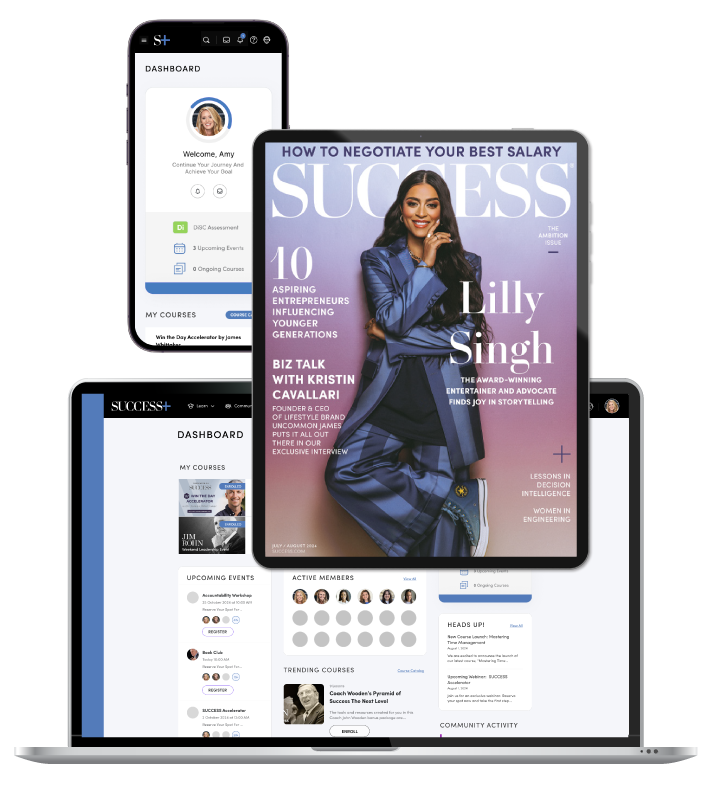A rising number of companies are experimenting with shared leadership at the very top, appointing two co-CEOs to split responsibilities and bring varied skill sets to the boardroom.
When executive duties are shared, organizations can streamline decision-making and overcome leadership bottlenecks. Especially in today’s AI and data-driven work landscape, having more perspectives in command can lead to sharper strategies and more effective execution.
Co-CEO model explained: How shared leadership works in modern companies
The co-CEO model often raises eyebrows, but Harvard Business Review research suggests it can work. Looking at 87 companies that tried shared leadership, HBR found annual shareholder returns averaged 9.5%, well above the 6.9% logged by their benchmarks. Almost 60% of co-CEO companies outperformed, and their leadership stints averaged five years—the same as solo CEOs.
“The job of running a company has become so complex and multifaceted, and the scope of responsibilities so great, that the co-CEO model deserves a fresh and close look. This is particularly true for companies shifting decisively toward agile-based management and for those embarking on technology-based transformations,” the review says.
Placing two leaders at the helm allows a company to capitalize on complementary skills: one may drive technical innovation while the other steers business strategy, partnerships or company culture. This division helps reduce blind spots and accelerates decision-making when challenges overlap, such as weighing AI innovation against privacy concerns or balancing growth with financial risk.
Teams may report to one or both leaders depending on their function, creating opportunities for cross-functional collaboration and faster problem-solving. Strategy meetings often involve both CEOs weighing in from their areas of expertise, while project teams can receive guidance from whichever leader is best suited to the task.
Daniel Ek hands day-to-day operations to co-CEOs as Spotify looks ahead
Spotify is the latest big name shaking up its leadership this year, but it’s more evolution than revolution. Founder and CEO Daniel Ek announced that starting January 1, 2026, he’ll step into the role of executive chairman. That means he’ll focus on long-term strategy, capital allocation and keeping the board connected, while leaving the day-to-day operations in new hands.
Starting next year, Spotify will undergo a major reimagining of its leadership structure. Gustav Söderström, who currently serves as co-president and chief product and technology officer, and Alex Norström, co-president and chief business officer, will officially step into the roles of co-chief executive officers. In this new arrangement, both will report directly to Ek. Söderström and Norström are also expected to join the company’s board of directors, pending shareholder approval.

This dual-CEO model formalizes a setup that’s already been working in practice since 2023, when the co-presidents were already leading day-to-day operations and strategic initiatives. With two seasoned leaders driving Spotify simultaneously, the company can tackle innovation and growth from multiple angles at once, rather than relying on a single perspective. Meanwhile, Ek’s shift to executive chairman ensures the long-term vision remains coherent, while the co-CEOs accelerate execution.
Spotify isn’t just reorganizing; it’s multiplying its leadership brainpower for an age that will prove to be more demanding and competitive. The music streaming world is getting crowded, with heavyweights like Apple Music, Amazon Music and YouTube Music all vying for listeners’ attention. Spotify knows it can’t just rely on having a huge song library anymore—it has to make listening smarter and more personal.
Oracle and Comcast are also among the latest firms to adopt a co-CEO model for managing their businesses.
Machine learning and shared leadership are powering Spotify’s AI future
On the surface, Spotify looks like any other streaming app, but it’s actually running on some of the smartest machine learning in tech. With hundreds of millions of users and a massive global music catalog, AI analyzes listening habits to deliver playlists that feel eerily personal, surface tracks you might never have discovered and highlight emerging artists at exactly the right moment.
Spotify’s co-CEO model isn’t just about splitting responsibilities; it’s also about multiplying perspectives. With two leaders guiding strategy, the company can test AI features and global partnerships and new products simultaneously, while drawing on a culture where ideas are debated openly and given a fair shot. This blend of dual leadership and collaborative ethos lets Spotify move fast without losing the thoughtful scrutiny that keeps its innovations smart and inclusive.
Of course, the co-CEO model is not without pitfalls. Shared leadership can create friction, slow decisions if alignment isn’t constant and always demands careful coordination. Yet, for Spotify, two seasoned executives working in tandem—especially with AI-generated insights guiding their choices—could ignite fresh growth, fuel creative experimentation and uncover opportunities that a single perspective may not envision.
Photo from insta_photos/Shutterstock











